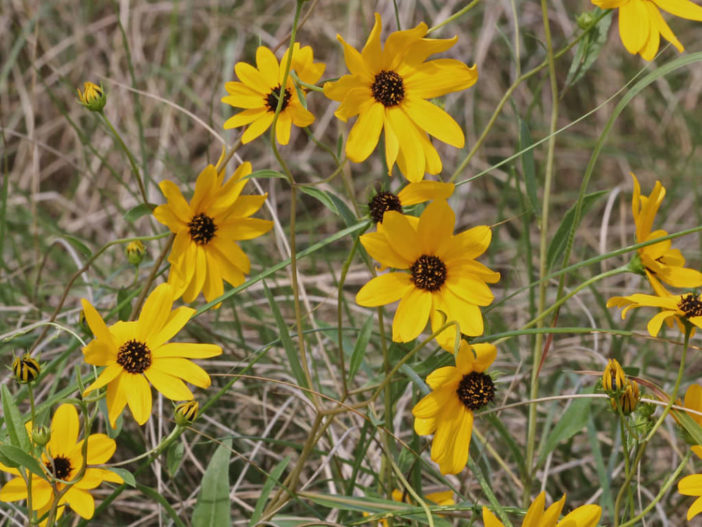Scientific Name
Helianthus agrestis Pollard
Common Name(s)
Southeastern Sunflower, Prairie Sunflower, Rural Sunflower
Synonym(s)
Helianthus agrestis f. agrestis
Scientific Classification
Family: Asteraceae
Subfamily: Asteroideae
Tribe: Heliantheae
Genus: Helianthus
Flower
Color: Bright yellow
Bloom Time: Early autumn
Description
Helianthus agrestis is an annual herb that grows up to 6 feet (1.8 m) tall. One plant can have up to 15 flower heads, each with about 12 ray florets surrounding 50 or more disc florets. The outer ray flowers are bright yellow, while the disk flowers in the center are flattened and brownish-purple. Leaves are rather broadly oval-shaped than some similar species, rough to the touch on the upper surface, and primarily alternate on the stem. The stem is branched and hairy.

Hardiness
It is grown as an annual plant, so it has no USDA hardiness zone.
How to Grow and Care
If you decide to add Sunflowers to your garden, there are a few things you will want to keep in mind.
First of all, they are called sunflowers for a reason. They need sun. Make sure that the location you choose for your Sunflowers gets full sun.
Second, you do not need to worry about soil too much. They are not picky about the soil conditions, but they are plants. They will do better in better soil.
Third, Sunflower seed shells contain a toxic substance to grass. So, you will need to either harvest the Sunflower heads before the seeds begin to fall out, or you will need to plant your Sunflowers in a location where you do not mind any nearby grass being killed.
Fourth, keep in mind the height of the Sunflower variety you have chosen. A giant, twelve-foot variety will end up acting very much like a small tree and may shade the surrounding flowers.
See more at How to Grow and Care for Sunflowers.
Origin
This species is found only in the states of Florida and Georgia in the southeastern United States.
Links
- Back to genus Helianthus
- Plantpedia: Browse flowering plants by Scientific Name, Common Name, Genus, Family, USDA Hardiness Zone, or Origin
Photo Gallery
Click on a photo to see a larger version.




